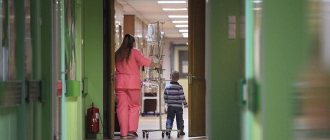Fear of dogs is quite common, especially if a person has experienced an attack by an animal in the past. Such an incident is often not forgotten over a long period of time. Feeling fear, despair and helplessness, he suddenly finds himself unable to cope with the situation. It is impossible to force yourself not to be afraid by sheer force of will. Subsequently, these feelings are remembered and rooted in memory. As a result, the person becomes lethargic, apathetic, afraid to make decisions and actively act in the chosen direction.
Symptoms of cynophobia
The main symptom of cynophobia is constant internal tension in the patient without objective reasons.
He constantly seems to be expecting a dog attack, and is haunted by obsessive thoughts about a potential threat. Sleep disturbances are also a concomitant symptom of most anxiety-phobic disorders. Nightmarish dreams, insomnia at night and drowsiness during the day, interrupted sleep, a long time to fall asleep - a typical clinical picture with increased anxiety.
The film phobe often turns pale, blushes, and may feel hot or shuddering for no objective reason. The desire to constantly change body position, fussiness and languor, involuntary movements indicate akathisia. The following somatic symptoms are characteristic of a cynophobe:
- muscle spasms;
- increased sweating;
- cardiopalmus;
- tightness in the chest;
- heart pain, arrhythmia;
- strong thirst;
- increased diurination;
- disorders in the gastrointestinal tract.
Mental symptoms are no less diverse:
constant nervous tension; excessive caution; fixation of attention on negative phenomena; aggression, irritability; attempts to control your every action and thought; “soul-searching”, the desire to analyze the past; pessimism, obsessive thoughts about bad premonitions -
Here is an approximate description of the psychological state of a cinemaphobe.
In severe forms of the disease, panic attacks periodically occur. During an attack, the patient experiences uncontrollable horror of the object of the phobia, as well as the fear of death from a lack of understanding of what is happening to his body. All this is accompanied by extensive somatic symptoms, as well as depersonalization (loss of division of the world into “one’s own self” and “others”), unrealization (biased vision of what is happening). In addition to panic attacks, vegetative crises and situational nervous breakdowns may appear against the background of fear of dogs.
A kinophobe’s pronounced symptoms manifest themselves not only in the presence of dogs. Sometimes just the thought of fear, a bad feeling, or imaginary apprehension is enough to trigger an attack. In this case, the following physical symptoms are present:
- arrhythmia, tachycardia;
- asphyxia, feeling of suffocation;
- hyperhidrosis;
- pressing headaches;
- vomiting, nausea that does not bring relief;
- aggression towards others without objective reasons;
- intense anxiety;
- slurred speech, disordered thoughts;
- thoughts of suicide, fear of dying.
Main manifestations
When you see dogs, you may experience pain in the heart, tightness in the chest, and sometimes numbness.
- Feeling of pseudo-threat. In a situation where a person’s life is not in danger, he may experience uncontrollable fear, even at the sight of a small puppy.
- Bodily discomfort. Chest pain, chest tightness, and muscle tension may occur. Moreover, even the barking of a dog that is at a distance can provoke a panic attack.
- Fear even of pictures of dogs.
- Psychopathological condition. Characterized by alertness and increased irritability. A person is afraid to even go out into the yard, because there you can meet stray dogs.
Treatment of cynophobia
If the prerequisite for the phobia is an objective reason - psychological trauma from a dog bite, from an attack by a pack of animals, then psychotherapy is very effective in this case. There are many techniques specifically developed by psychologists to treat fear of dogs.
In the absence of timely treatment, cynophobia can cause antisocial behavior: a person “falls out” of social life, stops going out into the street, to work, and reduces communication with other people. Most often, it is not difficult to remove a phobia through working with a psychologist. But sometimes a course of psychotherapy is not enough to treat a phobic disorder in a severe stage. In this case, additional drug treatment is prescribed. Today, a course of SSRI antidepressants is considered the most effective.
In the presence of phobic disorders, the dog also suffers from somatic and mental symptoms, and in particular from sleep disorders and nightmares. So remember: the object of your phobia is afraid of a lot himself!
Diagnostic methods
Proper treatment of kynophobia requires an accurate diagnosis. The true type of fear is diagnosed according to the following criteria:
- patients avoid any situations that contribute to fear;
- primary symptoms of anxiety are observed;
- vegetative manifestations are noted;
- a feeling of anxiety appears in certain situations, when confronted with a specific object.
In cases where cynophobia is a symptom signaling the manifestation of another mental illness, the doctor selects appropriate therapy.
Getting rid of fear
If cynophobia arose as a result of psychological trauma due to an attack or a dog bite, then psychotherapy will be the most effective way to cope with fear. Without contacting a specialist, a phobia can provoke a person into reclusion. The film phobe will stop going out.
In addition to psychotherapy, in especially severe cases, the patient is prescribed a course of medications. Antidepressants from the group of selective serotonin reuptake inhibitors (SSRIs) have proven themselves well. Indications for their use include panic disorders, depression, and increased anxiety. But they can only be used as prescribed by a doctor!
For those who do not suffer from cynophobia, but are simply afraid of dogs, I would like to offer some advice from psychologists.
If you only have fear of a certain breed, then try to find someone you know who has such a puppy. Play with your baby, take a walk with him
Then you will understand that this is an ordinary child who needs love, care, attention and affection. If you often have to visit places where there are a lot of stray dogs, then buy yourself, for example, a stun gun. Possessing such a means of self-defense in itself already gives confidence and a sense of security. Start socializing with dogs of the breeds that cause you the least fear.
Ask the owner for permission to pet the dog, play with him, and treat him to something tasty.
You need to overcome fear gradually. Make yourself a step-by-step plan. Describe the situations and actions in it from the least frightening to the most panic-inducing. A sample plan might look like this.
- Look at photographs of dogs.
- Watch videos and films about them.
- Watch the dogs in the yard through a closed window.
- Look at walking dogs through an open window.
- Look at dogs on the street walking in a muzzle and on a leash.
- Be in the same room with the animal.
- Pet the dog.
Moving from point to point, you will gradually stop being afraid. You may even fall in love with these animals and want to get a pet yourself.
According to animal psychologists, some dogs are also susceptible to phobias. These include, for example:
- fear of loneliness and separation from the owner;
- fear of certain loud noises.
Many street dogs are afraid that people will hurt them. This fear arises because some people kick them, throw stones and sticks at them. Even aggressive dog barking, which scares us so much, is associated precisely with cruelty on the part of people. The dog senses danger from a person and tries to protect itself.
In general, the one you fear so much is himself afraid of a lot.
Causes of fear
Most often, fear of dogs develops in childhood or adolescence. Without psychotherapy, fear can remain for life.
Interestingly, people who have been attacked by dogs do not necessarily become film-phobes. They, of course, take a long time to recover from their experience. They may need help from a psychologist. But they have no pathological fear of these animals.
People who have been bitten by dogs experience fear mainly of large and aggressive animals. At the same time, they treat puppies or small friendly dogs with tenderness and trepidation. They do not feel anxious when they see pictures of dogs or hear dogs barking.
Cinemaphobes are afraid of absolutely all dogs and everything that reminds them of them. It doesn't matter the breed, age or size of the dog. Even a dog barking or a video recording of these animals causes panic horror in a film phobe. At the same time, he is well aware that this animal cannot harm him, but he still experiences fear.
I will list the main reasons for the development of cynophobia.
- Traumatic incident. This includes an attack by a dog or an entire pack that occurred in childhood. In adults, such situations rarely provoke the development of a phobia.
- Predisposition. Psychologists have found that if at least one parent suffers from a phobia, then the children will be significantly predisposed to developing a similar anxiety disorder.
- Features of the nervous system. Phobias arise very quickly in people with an unstable emotional state, with a set of complexes and a feeling of inferiority. For such people, sometimes one unpleasant incident with a dog is enough for them to develop pathological anxiety.
I advise you to watch a short video of a guy talking about his fear. It will help you better understand exactly what cinephobes feel.
Root cause
However, if the above situations did not find a place in your life, and the dog still experiences such phobias, it is worth thinking about the root causes. If a dog is afraid of a person, and not only of strangers, but also of its own owner, it means that it has a very susceptible and, at the same time, traumatized psyche. All fears that arise in an animal when it sees a person are divided into two categories.
- These are the ones that have a reason.
- And the reason for which, unfortunately, is impossible to see.
Let's look at the first category. If fear has its basis, it means that the animal received negative emotions, was in a dangerous situation or experienced pain. Most often, fear is a consequence of life experiences. Thus, dogs that once happened to be caught by dog handlers, experienced rough treatment and bullying, are rarely inclined to communicate with humans. Those people who have a similar structure to the torturers will remind the animal of what they have experienced.
The cause of fear of people may be a traumatized psyche
Fears that have no reason are often recorded by veterinarians. For example, an animal becomes afraid when a baby cries. Or he begins to be afraid of any family member for no reason, while the person has never done anything bad to the animal. If you can determine the cause of the phobia, it will be much easier for you to fight it.
The dog needs to be helped to overcome uncertainty, but in no case should it be supported. Sometimes animals are insecure due to the fact that they are weak in front of their relatives. This feeling of weakness carries over into the home, where the animal feels vulnerable in the presence of people.
Causes of phobia
The very sight of the animal and its grimace can also frighten.
If a woman begins to be afraid of dogs, or a man, there may be external factors at work. In rare cases, a phobia may be congenital; in other cases, it may have one of the following causes.
- Bad parental behavior. From childhood, a child may be prohibited from touching a dog, even a domestic one, on the grounds that it may bite. Over time, the child begins to understand that dogs pose a danger to him.
- The grimace of an animal can greatly frighten a child, a man or woman with a weak will.
- The experience of being attacked, whether as a witness or a victim, can even cause a lifelong phobia.
- Fear of rabies. The fear is actually directed at the disease that these animals can transmit.
- Attending dog fights shows how aggressive these animals can be and the damage they can cause. And this can cause intense fear whenever you approach the dog.
- Watch scary videos with dogs.
It is not always that a person who has survived a dog attack begins to experience a strong fear of these animals. My brother was bitten on the leg by a dog when he was a child, and quite severely. However, having matured, he does not feel disgust for these animals and is not afraid of them.
How to deal with a dog's tantrum on the street
If your pet is not yet used to walking, he may stop in the middle of the road, whine and resist. What should the owner do? It is generally not advisable to encourage cowardly behavior. In this case, this is acceptable. You must learn to balance: not to turn your pet into a hysterical person, but also not to leave him completely without support. You can calm it like a dog: gently squeeze the puppy between your legs to let him know that he is under protection. Babies can hide behind their mother like this. They feel warmth and reliable protection.
Sometimes it's wise to give it a break. Stop for two minutes and let your client get used to the new environment. Continue on your way and observe. If the attacks are repeated too often, it's time to stop. There is no need to walk until you are exhausted. It is acceptable to carry your pet home in your arms if you accidentally crossed the line.
Independent measures to combat cynophobia
How to get rid of the fear of dogs yourself:
- Review your diet. An incorrect menu leads to disruptions in the balance of carbohydrates, proteins, fats, vitamins and minerals, which provokes disruption of the functionality of the central nervous system and brain. Physiologically, this is expressed by anxiety. A diet for fear of dogs is aimed at increasing the number of carbohydrates in the diet. They secrete tryptophan, which is converted to serotonin.
- Normalize sleep and rest patterns. Mental fatigue is no less dangerous for the brain. You need to sleep 8–10 hours. If mental work predominates, then physical activity should be introduced in your free time. It is better to avoid delays at work and additional work at home.
- Workout. The type does not matter, it can be swimming, gymnastics, athletics or any other. Sports walking in the fresh air also helps eliminate anxiety and improve central nervous system activity.
- Find a hobby. Doing what you love improves your mood, self-esteem, and distracts you from bad thoughts.
- Take time for self-discovery. Daily training in this field can bring considerable results. Self-improvement and knowledge of your spiritual self allows you to find harmony of body, soul, mind, reveals hidden talents, and brings you closer to the world around you.
- Work on your consciousness. You need to try to imagine yourself as the owner of a dog. By gradually cultivating it in your imagination, you can raise a large and strong pet, but with good thoughts and morals.
- Find a weak point in the subconscious. In psychological practice, this exercise is called the “Achilles heel.” The principle of working on yourself is to compare associations in the presence of fear. That is, a person must explain what exactly he is afraid of when he sees a dog, and what he feels at that moment, what he wants, who in his mind can help solve the problem. Having understood these principles, a scenario is built for a meeting between a film-phobe and a loved one with an animal. Moreover, in this case, the four-legged one experiences fear, and the “guard” present in the thoughts provides support and protection to the client. Sometimes long training is required before a person can overcome his problem. If you concentrate on your own fear of dogs, then stop the exercise and repeat it at another time.
A phobia of dogs is expressed in a vivid panic fear of a pet. Cinemaphobes avoid not only animals themselves, but also all possible reminders and associations with them. You can overcome fear on your own by changing the principle of life, diet, and playing sports. In case of advanced pathology, a psychologist-hypnologist will help with this. If you ignore the problem, it will unbearably infringe on the person and lead to his isolation from society.
Adaptation for a Shy Puppy
It's good if you noticed the problem in time. Cowardly dogs are incredibly difficult to train
They may be smart, but fear is stronger. When training pets with a weak nervous system, “kickbacks” often occur. Just yesterday the puppy was calmly walking on the street, and after meeting a cyclist he is afraid to leave the house? Typical situation. Be patient.
What should be done? Adaptation program for a shy puppy
1. Take a walk.
Take a long walk at least 2-3 times a week. Yes, the baby will panic a lot, but it is necessary. In the process of walking, the puppy will get used to the street, and you will establish a close bond. Focus not on physical activity, but on studying the world around you. Walk along the streets, parks, bus stops... Always praise and give a treat for showing curiosity. This way, you will reinforce the normal reaction.
2. Be friends.
It is important to get to know the owners of adult, well-trained dogs. The younger ones follow the example of the older ones
It will be much easier for the puppy if he has company.
3. Train.
Cowardly pets need to be given mental exercise. During training, the animal concentrates, is distracted and calms down. This will provide better control in the future and help prevent scares.
These are the main, but far from the only points. Pay more attention to your relationship with your dog. Try to make her more confident, stroke and caress her more often. Make your pet feel like part of the family. Don't shout or scold.
Don't expect instant results. The effect will accumulate gradually. Most often, the program takes 6–12 months. Be prepared for the fact that you will have to struggle with certain problems throughout your life.
The only way to avoid trouble is to not make a mistake when choosing a puppy.
Chat with the breeder. If he has nothing to hide, he will kindly answer all your questions, show his parents and conditions. Defects of the nervous system are transmitted genetically, so observe the behavior of the mother of the puppies.
One way to test temperament is through tests.
- Check your babies' reaction to noise. For example, the sound of keys falling. The “correct” puppy may be scared, but he will quickly adapt and go to see what is lying there.
- Try taking the baby to another room or outside if you have a fenced yard. See how he will behave without his brothers, sisters and mother. Bring a toy or some object. Observe the reaction.
- The baby should not bark, hide or just sit. A normal puppy is friendly and moderately curious. Of course, everyone is individual, but some reactions go beyond the norm.
Many choose the most timid and unfortunate one, because it becomes pitiful. Are you absolutely sure that you can cope with such a test? If yes, then let's find out what to prepare for.
Socializing a pet that is afraid of people
How to deal with a fearful dog:
- Remember that during times of fear you should not feel sorry for your pet, nor should you scold it. He becomes disoriented and will continue to be afraid next time, in the hope that he will be pitied.
- You are a strong master leader and remain calm. Pretend that you are not afraid of anything, let the dog take an example from you.
- Socialize your dog gradually. First, meet new people.
New acquaintances can come to visit you at home or invite old friends for walks
At the same time, do not focus on your pet. Don’t let him start to be a coward ostentatiously and think that this is necessary, since there are guests in the house or an old acquaintance is with you on a walk.
When the dog gets used to a person, you can ask him to talk to him affectionately, and then bring your hand to his muzzle (hold your palm up), let him sniff and carefully try to stroke him. Gradually begin to communicate with other people, then walk the dog on a leash in the company of its old friends
If you adopted a dog from a shelter, which is noble, but he is very shy, then even a year may not be enough for him to get used to it and begin to trust people.
A good way of socialization when you take a puppy into a home where there is an older dog. On the street you, and then an acquaintance of the older dog, pet him. The younger one will observe that he likes it and sooner or later he will allow himself to be stroked. The main thing is that the dog is among people every day. Isolation will lead to even greater fear of a person.
Every day 2-4 times or even more, take your pet for walks among people. Start walking in less crowded areas and gradually move to busier ones. As the fruit of your long psychological work on behavior correction, you will soon be able to walk with him even around the market, examining and choosing goods.
When your pet gets comfortable in a city or village, even take him to exhibitions, even if only as a guest. There he will see many relatives.
What absolutely should not be done
There are many ways to raise a hysterical, cowardly and potentially dangerous dog. In addition to outright cruelty and boundless indifference, the following can lead to this:
- Shouting, insults and physical abuse in various situations. It doesn’t matter whether the pet misbehaved, didn’t follow a command, or the owner is simply in a bad mood. You cannot take out anger and irritation on an animal, and screaming has never been the right method of education.
- Limiting your pet's communication with other animals. If isolated, the dog will perceive both a huge St. Bernard and a tiny duckling as a threat. The result is a desperate coward with a shattered nervous system.
- Lack of training and regular walks. The dog must receive new information. In addition, it is natural for her to relieve herself in nature, and not in a tray or on a diaper. Isolation has never made anyone brave.
- Prohibition for pets to communicate with pets. In this case, he will perceive everyone as strangers. Of course, dogs of guard breeds should not fawn over strangers on the street, but friendliness will not harm decorative dogs at all. In addition, they will not perceive people as a threat.
- Reluctance to visit a veterinary clinic and grooming salon. This is also a type of communication when a dog finds itself in an extreme situation. Soon she gets used to it and is no longer afraid. For her, a visit to the doctor or a wash, haircut, or nail trimming cease to be stress triggers, so they do not provoke the appearance of fear. If the dog is completely unprepared for such a situation, then his reaction can be unpredictable, which will have a bad effect on the state of the nervous system.
To adapt an animal to everyday life, you need to communicate with it, and not shake it like a porcelain doll. Such treatment can do him a disservice.
What is the fear of dogs called?
What is the correct name for fear of dogs? This concept comes from the Greek κυν - dog and φόβος - fear. Cynophobia is characterized by an inexplicable, uncontrollable fear of dogs.
This pathology has subtypes:
- adactophobia - fear of being bitten;
- Rabiephobia - fear of contracting rabies.
The fear of dogs appears not only in close proximity or contact with an animal, but also when watching films, pictures, videos with it. On average, there are 1.5–3.5% of film phobes worldwide. For the most part, this figure consists of children and young people under 30 years of age.
If the pathology is not treated in a timely manner, then the phobia of fear of dogs progresses. Cynophobia is often observed in hypochondria, senestopathy, and schizophrenia. The risk of getting sick increases with significant overstrain of the nervous system, neuroses, depression, and breakdowns.
Features of dealing with dog fear
Fear of dogs can be treated with:
- image processing. The client looks at the photos of the dogs, sharing his emotions with the specialist;
- transformation methods. At the moment of contact with an animal, you need to mentally transfer yourself into the role of an object that is not of interest to the dog;
- working through positive facts. The specialist teaches you to treat your pet as a friend. To do this, watch relevant films and read the necessary literature;
- contact with the puppy. Unlike the big dog, this creature looks cute, helpless, harmless. This tactic can help overcome panic.
How to behave when meeting a dog
To understand a dog’s mood, you need to study its habits. By the behavior of an animal, you can determine what is “on his mind.”
| Dog behavior | Mood |
| Walks from side to side. The tail is tense. | He thinks whether to attack a person who is in his field of vision or not. |
| Joyfully swings its tail and sticks out its tongue. | Wants to play or get acquainted. The animal is friendly. |
| She pricked up her ears. The fur stands on end. | Shows dissatisfaction and prepares to attack. |
| She tucked her tail and flattened her ears. | The animal is afraid, but is still ready to attack to protect itself. |
| Roars, showing his fangs. | A sign of immediate readiness to attack. |
| Barks loudly. | Defends its territory. He warns that he will bite a person if he does not leave. |
Basically, dogs only attack if provoked. Although there are exceptions to the rule. Dog handlers do not recommend doing the following when meeting a stray dog:
- wave your arms;
- shout loudly;
- throw stones or sticks at the dog;
- look the animal straight in the eye.
Such human behavior will only cause aggression in the beast. Here's what to do if you encounter a stray dog or a whole pack of unfriendly animals on your way.
- Try to pass by as calmly as possible. Dogs are great at sensing someone else's fear and are great at recognizing false confidence.
- Lower your eyes down and press your hands to your body. So, the dog will see that the person is not dangerous.
- Don't smile. Your smile may be perceived as a grin. And this is already a signal to action: we need to defend ourselves.
- Don't run away. This makes absolutely no sense if you cannot quickly hide in an entrance or other room. The animal is almost always faster and more resilient.
- Don't turn your back on them. They will definitely attack from behind.
- In a pack of dogs, always look for the leader. If you can scare him away, get rid of everyone else.
- Try to distract a dog that is about to attack. To do this, throw her some, preferably edible, object. The animal will switch to him and forget about the person.
Dogs guarding private homes feel at home in their territory. They are the protectors of the house and its inhabitants. Therefore, the animal will definitely bark or growl at a stranger passing by. Take her barking as a kind of alarm. Calmly pass by, observing the animal with peripheral vision.
If the animal is not on a chain and rushes after you, then stop and turn to face it. Try to remain calm. Although, of course, in such a situation it is very difficult. Most likely, the dog will simply sniff you and return to his booth. You can give him the command: “Ugh!” Just do it in a confident and firm voice. Almost all pets understand this command.
For inner peace, carry one of the following self-defense means with you:
- stun gun;
- gas cartridge;
- ultrasonic dog repeller.
They will help protect yourself in case of an animal attack. If suddenly the dog attacks you, and there are no devices at hand, then hit him in the nose. This neutralizes the beast. A dog's nose is the most vulnerable spot.
A dog is a pack animal. She senses hierarchy and submissively submits to the one who is higher in this hierarchy. And at the top it is always the most confident - the leader of the pack. A little earlier I wrote that if you are afraid of dogs, then do not look them in the eyes. Otherwise they will take it as a signal to attack.
However, if you are a person who does not allow doubts about his superiority, then your direct gaze into the eyes of the animal will make him obey. The dog will lower his eyes and begin to whine. So cultivate confidence in yourself, and no dog will be afraid of you.
How to help your child stop being afraid
Young children are very impressionable. The reasons why a child begins to be afraid of dogs may be:
- a dog attacking a child;
- dog bite;
- sharp and loud barking;
- large sizes, especially when the dog is larger than a child;
- grin and angry growl;
- an animal attack on other people, which occurred in front of the baby.
Parents need to behave correctly to prevent the phobia from developing even stronger. You cannot do the following:
- calling a child a coward;
- make fun of his fear;
- criticize;
- force the child to face his fear.
Here are some tips to help your child overcome fear.
- When passing a dog on the street, hold your baby's hand tightly. He will feel safe under your protection.
- Watch movies and cartoons with your child in which dogs are depicted as friendly animals.
- Go with your child to visit where there is a puppy. Let the baby play with the dog.
- When telling your child about dogs, do not focus on the fact that she can bite. Better describe the positive qualities of the animal.
Be sure to teach your child how to behave correctly when meeting dogs, namely:
- do not touch her when she is eating or licking puppies;
- do not run away from dogs;
- do not look the dog directly in the eyes;
- do not approach stray animals.
Phobia in a child
Children tend to be afraid of things that seem trivial to adults. A very big part of this fear is the fear of dogs. If the phobia does not go away, then very soon it can develop into a real disease.
When communicating with a baby, you should not devalue or ridicule his fear. Attempts to forcibly reconcile a child with a pet, for example, by persuading him to pet him, can result in an even deeper deepening of the problem. He will not stop being afraid, but on the contrary, he will still consider the people closest to him as traitors.
Therefore, the best option would be to contact a psychologist-hypnologist to resolve the situation. In this case, overcoming the fear of dogs will be done with gentle measures, through fairy tales and art therapy.
If the baby does not have panic fear, then you can offer to get a puppy. The little pet will grow up with the baby, giving him a lot of positive emotions. At the same time, you should not buy a four-legged animal without the child’s knowledge; everything should happen with the child’s consent.
When should you visit the vet?
Unfortunately, sometimes the reason for such animal behavior is not the lack of proper education from the owner. Weakness of the nervous system is a common reason why an animal cannot normally enjoy walks. Due to the fact that the nerve endings do not function properly, even adults behave differently, constantly on guard.
Such animals have a high risk of stroke and other diseases that lead to death. They may be frightened by rustling noises, a crying child, or sounds that are somewhat louder than normal. The main reasons that you should visit a veterinarian are involuntary urination during loud noises, fear and shaking if the owner raises his voice a little, and panicky fear of other people. The veterinarian must examine the animal and take tests if necessary. If it is determined that the dog has a weakness of the nervous system, and possibly other diseases, appropriate treatment will be prescribed.
Weakness of the nervous system is one of the reasons for a dog’s inadequate reaction to people.
If a dog generally feels bad, it considers itself vulnerable and snaps at absolutely all strangers from whom it can receive a threat. For example, animals that suffer:
- diseases of the gastrointestinal system;
- hearts;
- feels weak;
- elevated temperature;
- dizziness and pain;
- become an easy target, and realizing this, they try to protect themselves.
Therefore, before learning commands with animals and trying to socialize him in any way, be sure to make sure that nothing bothers the dog.
How to understand that you have serious problems and not just fear
Sometimes severe negative feelings about having a dog around are mistaken for motivated fear.
For example, don't confuse the barking of a large dog without a muzzle with a fear of upsetting the dog. If so, just get out of the danger zone and read some tips from dog owners on how to not be afraid of dogs on the street. Objective symptoms are as follows:
- trembling of the body, trembling of the limbs or convulsions of varying severity;
- muscle spasms and inability to move;
- arrhythmia, tachycardia or any other abnormality in the functioning of the heart muscle;
- dizziness and disorientation
- increased sweating in the presence of an animal;
- nausea and vomiting;
- feeling of tightness in the chest, inability to breathe;
No less important symptoms of cynophobia are associated with mental activity. A person suffering from this phobia falls into a stupor and feels a complete loss of control over the situation. They experience an irrational fear of death and a constant sense of impending danger.
Fluctuations in emotional balance and exit from it intensify. They cry a lot and may even think about suicide. If thoughts about the end of life persist, a person becomes more irritable: all because of the spontaneous surge of cortisol that occurs at the sight of a dog.
In severe cases, panic attacks and paranoia may occur. This happens not only in the presence of an animal, but even when watching a movie or photograph that shows a dog. An advanced form of cynophobia causes depression, disappointment, and does not allow you to leave your comfort zone or even your home.
What is cynophobia and why does it occur?
Cynophobia is an irrational fear of dogs that cannot be explained logically (like other phobias). This is not that uncommon: 1.5 - 3.5% of the population is terrified of dogs, and as a rule these are young people (under 30 years of age). Within the framework of cynophobia, a distinction is made between the fear of being bitten and the fear of contracting rabies.
It is worth distinguishing between true cinemaphobia and pseudophobia. The latter occurs quite often. Pseudo-fear of dogs is often characteristic of psychopaths (including sadists), who use fear of dogs as a reason to harm them or their owners. For example, a significant part of the so-called “dog hunters” belongs to this category. And knacker tendencies are covered up by illness.
Representatives of Islam who consider dogs “unclean animals” and avoid them also cannot be called suffering from cynophobia.
Cynophobia may be part of another mental disorder (such as schizophrenia).
As a rule, real cynophobia does not include aggression towards animals and their owners - such people only strive to avoid contact with dogs as much as possible. If you are dealing with a psychopath hiding behind pseudo-kinophobia, then manifestations of aggression on his part are possible.
Photo: google
Cynophobia is diagnosed if the following criteria are met:
- Manifestations of pathological fear that are primary and not caused by delusions or obsessive thoughts.
- Anxiety occurs only in the presence of dogs and in situations associated with them.
- The patient avoids dogs and everything connected with them.
- No other psychopathological disorders.
As a rule, panic fear of dogs arises in childhood and, without adequate help, can persist into adulthood. But, contrary to popular belief, dog attacks are extremely rarely the cause of this disorder. I have already written about how fear of dogs develops in children and whether it is possible to help a child cope with it, so I will not dwell on this in detail in this article.
Distinctive features of a kinophobe
A person dealing with a phobia does not show aggression towards the animal; on the contrary, he avoids it. Those who pretend to be falsely afraid of dogs can cover up their sadism, carnage, and psychopathy associated with pets with imaginary protection from four-legged animals. Therefore, it is necessary to differentiate true pathology from pseudo-disease.
Also, people who neglect or avoid dogs for their own or religious reasons should not be considered kinophobes. To make an accurate diagnosis, a comparative analysis is carried out:
- anxiety appears at the sight of corresponding paraphernalia, pictures or animals;
- a person avoids meeting a four-legged animal, both realistically and hypothetically;
- identify other mental diseases;
- signs of panic fear should be primary, and not a consequence of delirium or obsessive syndrome.
Aggressive response to fear
Impulsive natures, choleric people, sanguine people do not run away when a feeling of fear appears. On the contrary, they immediately rush to an object that evokes negative emotions. If a dog not only barks at strangers, but also uses its teeth, it will not be possible to cope with such a pathology without a dog handler. Professionals know how to correct the behavior of such dogs.
If the pet barks, growls, but does not take active actions, you need to calmly and confidently approach him, take him by the collar and lightly pull him, give the command “quiet”. If this measure does not have the desired effect, you should squeeze the dog’s sternum with your knees and hold it until the object that caused the dog’s aggression leaves. Then you need to sit him down, sternly but calmly say “ok”.
You cannot pet or praise your pet when it is aggressive. If such inappropriate behavior appears, it is necessary to begin intensive socialization. Regular walks will be an important point. Gradually, you need to change walking areas from deserted ones to areas with active traffic, so that the dog gets used to it and understands that strangers do not pose a danger to it. A prerequisite is a friendly attitude towards the pet, calm, confident behavior in all situations.
Passive behavior of a pet when fear appears
Fear can provoke a passive reaction. In this case, the dog, frightened of a stranger, tries to run away, hide, or hide in a secluded place. This is what phlegmatic, melancholic animals do. The owner needs to wait until the dog moves to a safe distance. If she is not going to stop and continues to walk in search of a secluded place, you need to command: “come to me,” calling her nickname.
When the pet stops, you should calmly approach him. If the dog’s feeling of fear has passed, he has calmed down, you can fix the leash and give the command “near”. You can play with the dog to distract it, order it to bring a stick, etc.
Pets who do not feel confident in their abilities behave passively. The owner should know that the best educational tool is personal example. In such a situation, you should not fuss, be nervous, or make sudden movements. You need to show the dog that everything is fine, there is no reason to worry. The pet will copy the owner's behavior.
Dog-human interaction
It is not a dog's nature to be afraid of people. Thousands of years have passed since the domestication of the beast by man. Dogs are faithful companions in hunting, recreation, long trips and in life. Today there are special animals that help sick people, so-called guide dogs or animals that distract from stressful situations.
For a dog, interaction with a person is also of great importance. Firstly, an animal that has its patron in the form of a person is self-confident, not subject to stress and anxiety, and easily socializes among its relatives. In addition, close interaction with people provides the basis for the development of the animal’s mental abilities. The dog takes actions in order to express its emotions, desires and feelings to the person. For example, at the moment of a strong impulse of tenderness and love, he begins to lick the owner, when he wants to eat, takes the desired position, and when the phrase “let's go for a walk” he waits at the door. An animal that has a close connection with people is highly trainable and responds to a huge number of commands without any problems. And animals that get along with people live longer. This is shown by various sociological studies.
Dogs are faithful companions to humans










